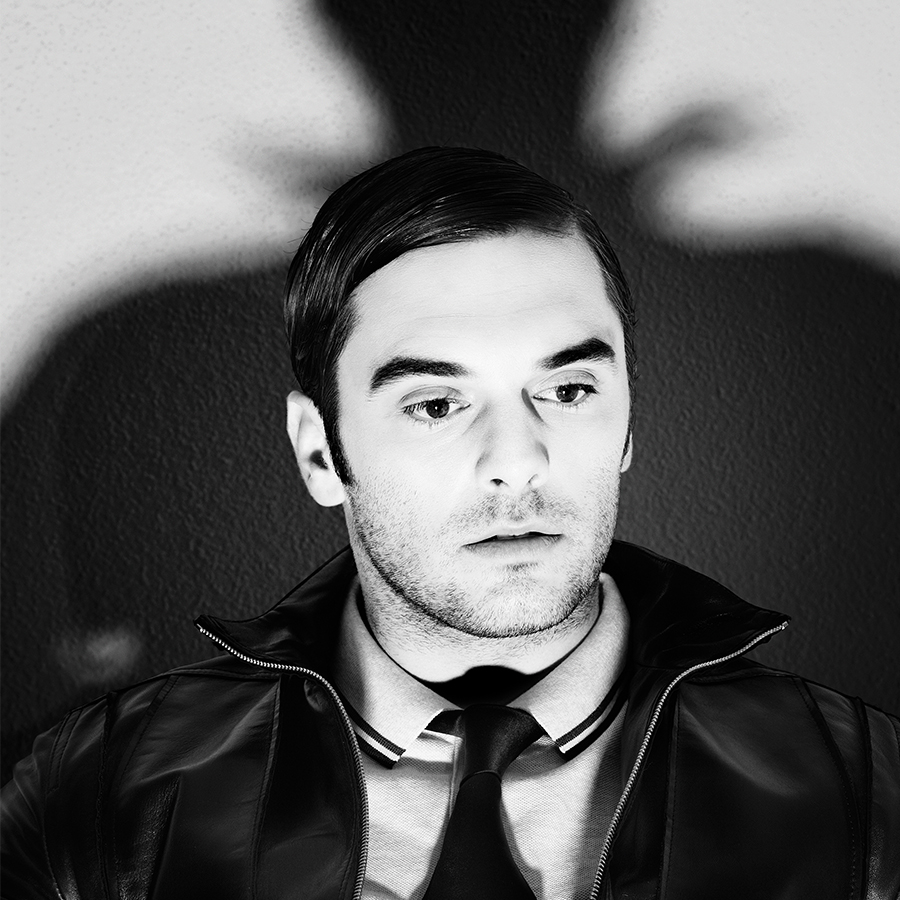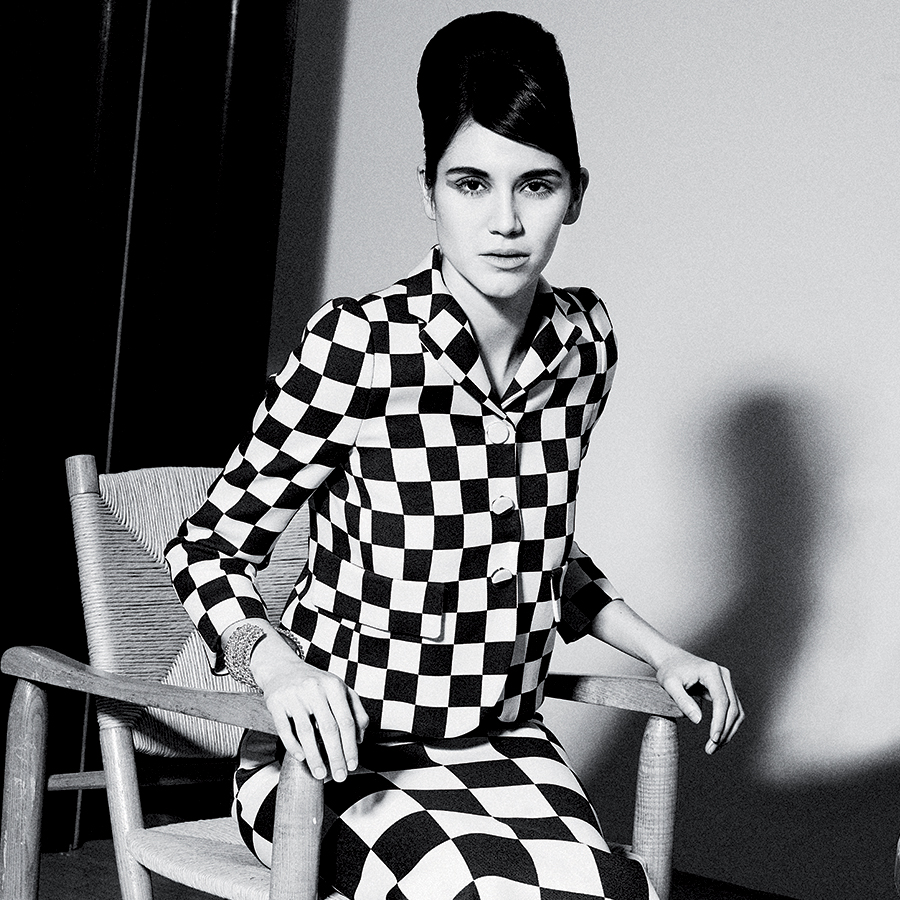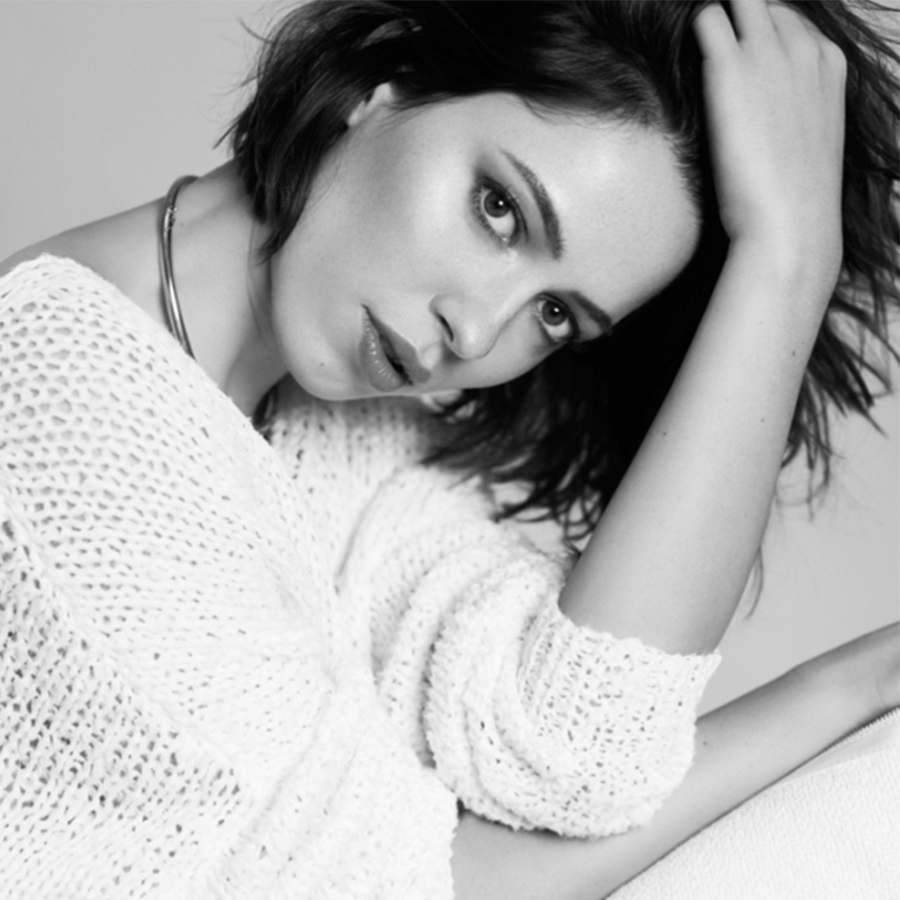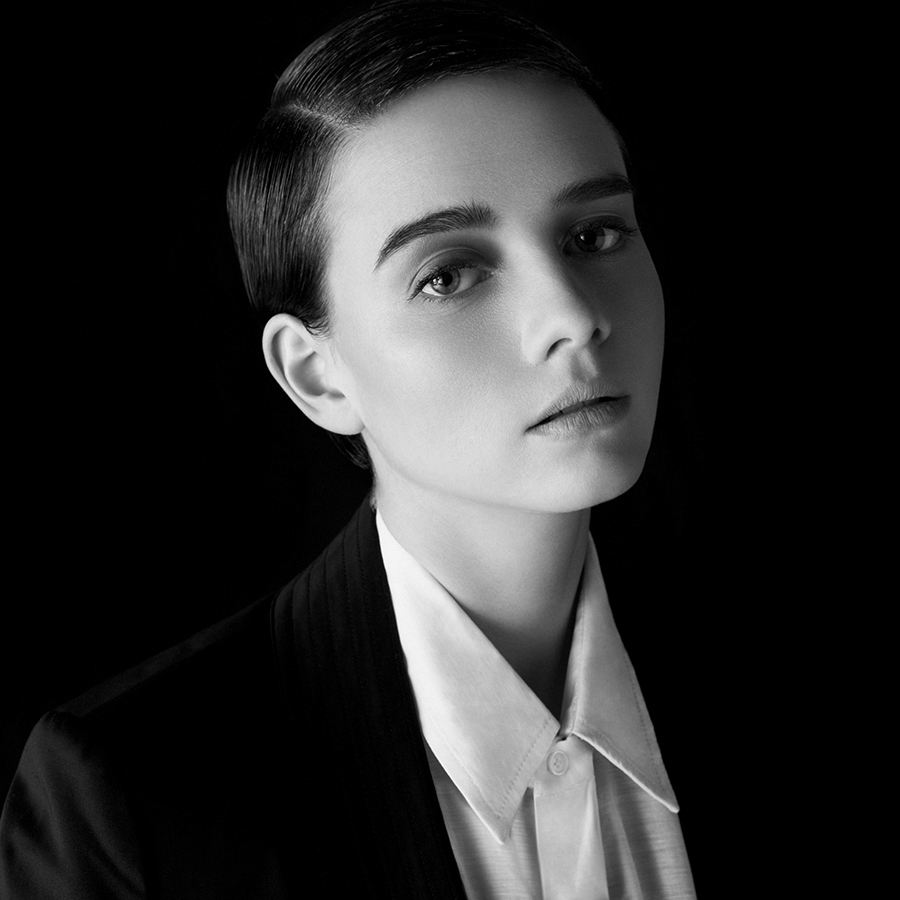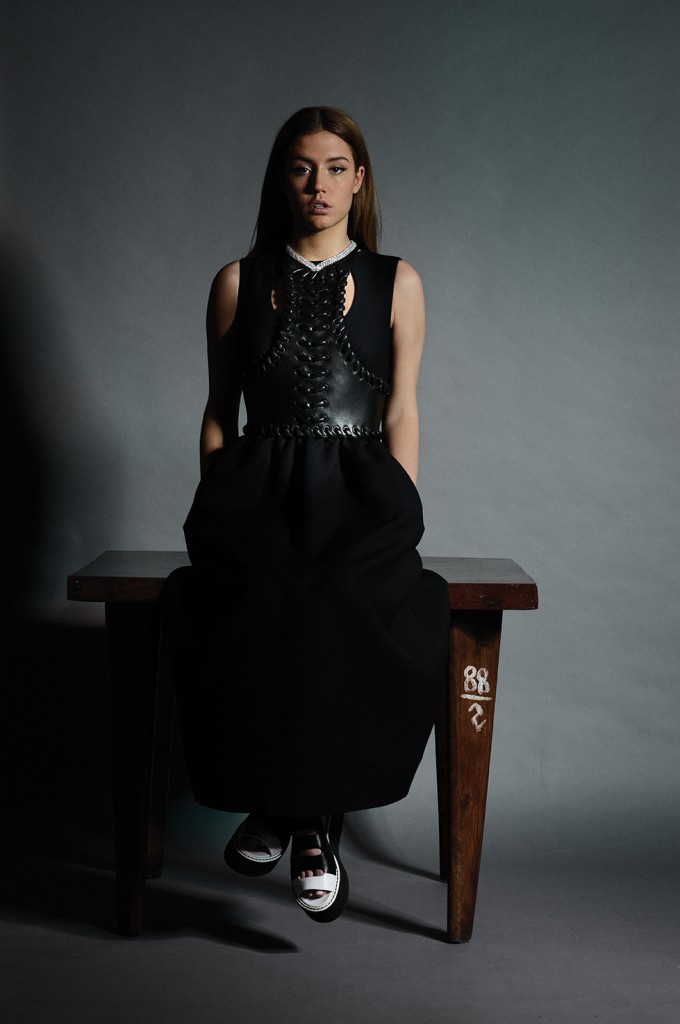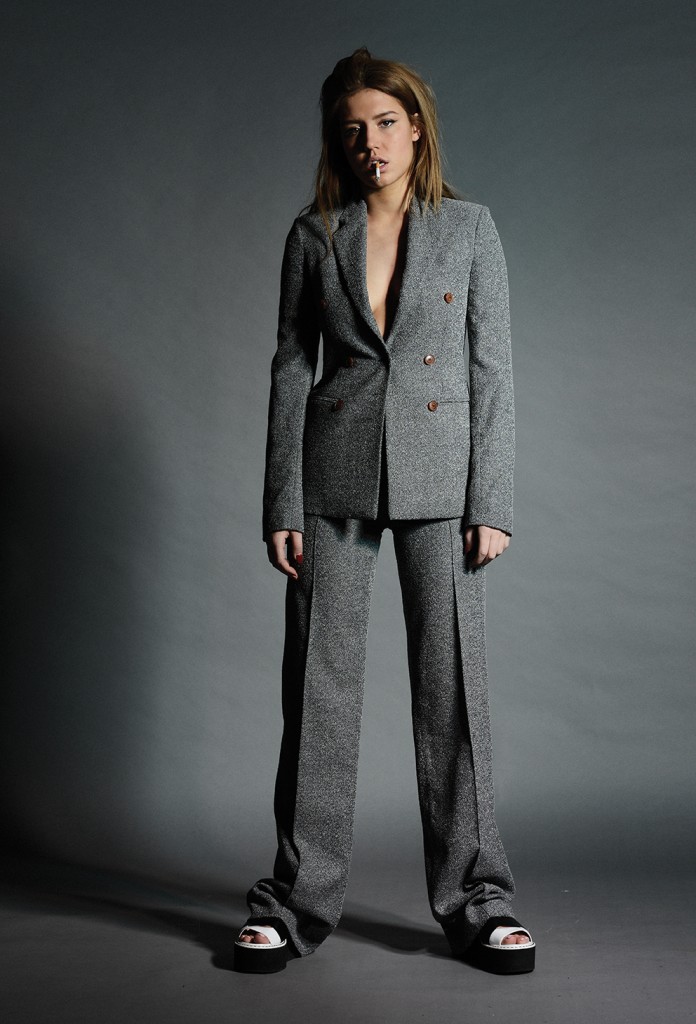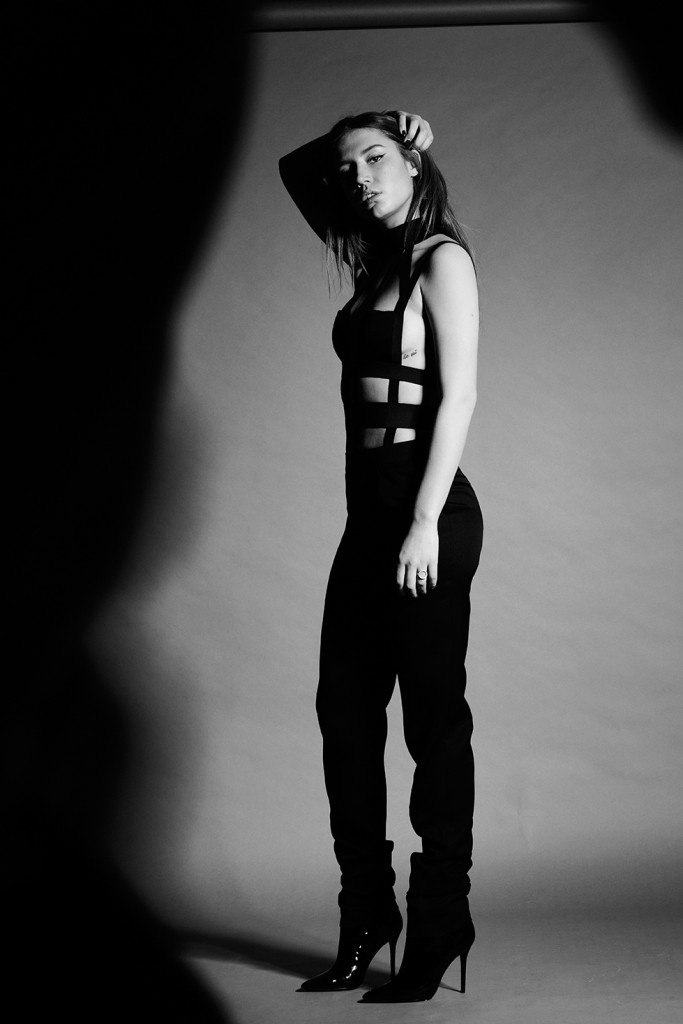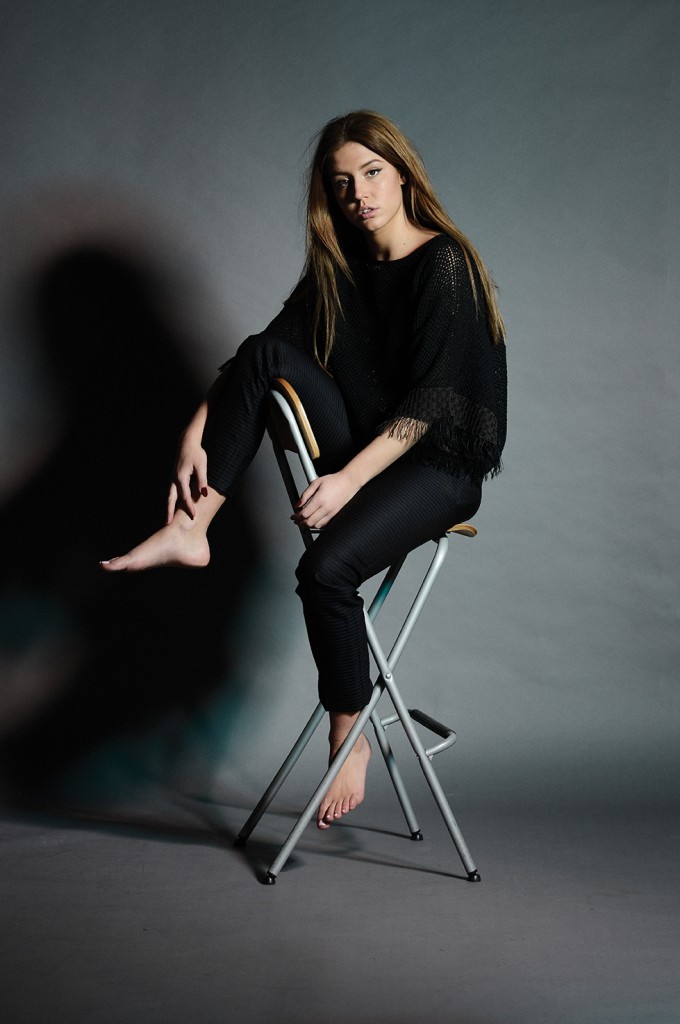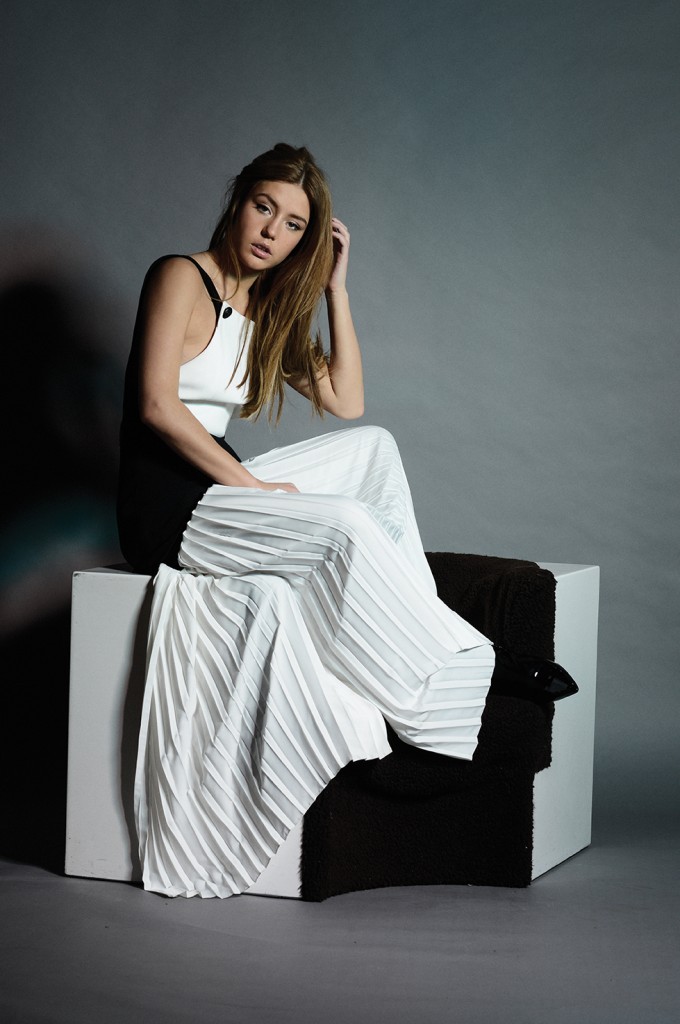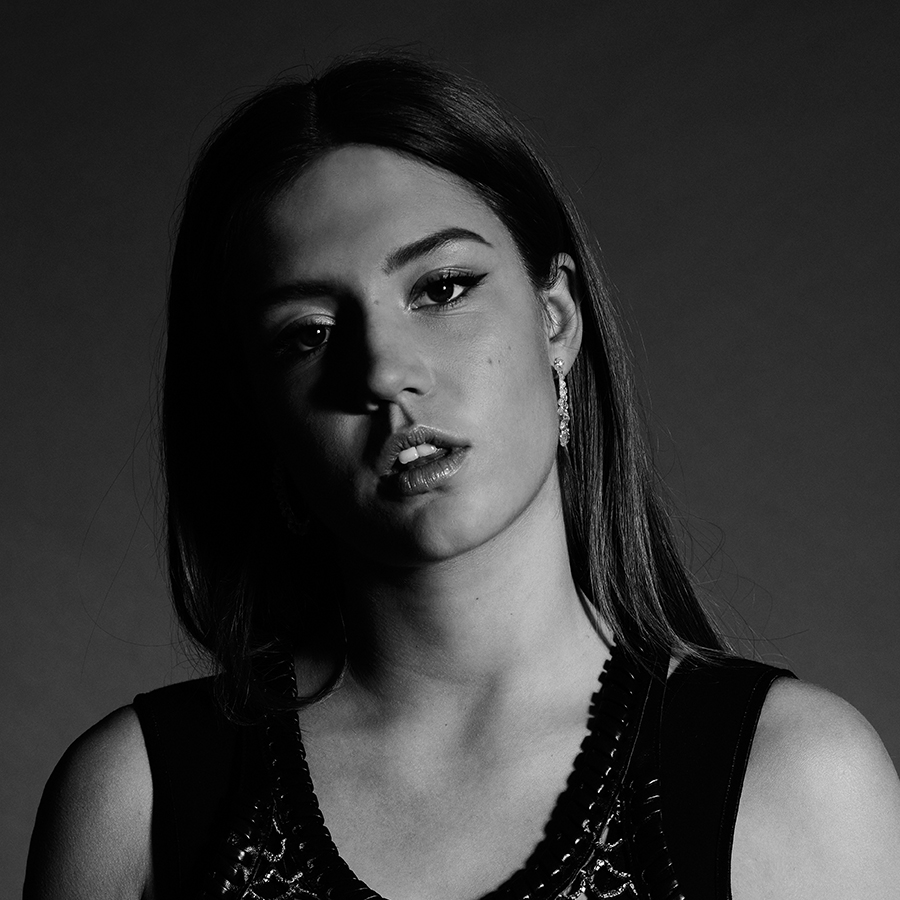
ADÈLE EXARCHOPOULOS ON ACTING
By Crash redaction
ADÈLE EXARCHOPOULOS
ON THE OCCASION OF TODAY’S SCREENING OF « THE LAST FACE » BY SEAN PENN AT CANNES FILM FESTIVAL, WE TAKE A LOOK BACK TO OUR RECENT EXCLUSIVE FASHION EDITORIAL AND INTERVIEW WITH ADÈLE EXARCHOPOULOS, THE NEW LEADING ACRESS OF FRENCH CINEMA AFTER HER FABULOUS INTERPRETATION IN BLUE IS THE WARMEST COLOR BY ABDELLATIF KECHICHE.
L’INGÉNUE
WIDELY PRAISED FOR HER ROLE IN BLUE IS THE WARMEST COLOR, ADÈLE EXARCHOPOULOS WILL SOON RETURN TO THE BIG SCREEN WITH A LEAD ROLE IN ÉPERDUMENT, A DRAMA DIRECTED BY PIERRE GODEAU. AFTER EMERGING AS ONE OF THE LEADING FIGURES IN THE NEW GENERATION OF FRENCH CINEMA, THE ACTRESS IS NOW GETTING HER INTERNATIONAL CAREER OFF TO A BRILLIANT START ALONGSIDE SEAN PENN AND MICHAEL ROSKAM. SHE MET WITH US TO TALK ABOUT HER EXPERIENCES AND UPCOMING PROJECTS.
Interview by Armelle Leturcq
How did you first meet Pierre Godeau, the director of “Éperdument”?
I heard about a plan to adapt Florent Gonçalves’ novel “Défense d’aimer”(1) and was immediately intrigued. Then Pierre and I had a first meeting so he could give me the script. Actually it was our second meeting, and it was at a trial open to the public that he had invited me to go watch. I told him I wanted to be in the film. He agreed and we started working together: we got to know each other by taking part in improv workshops with female inmates at the Fleury-Mérogis prison for four months, three hours a week. It was an excellent way to step into the subject so that our acting would be more natural and closer to reality.
So you literally dived into the prison system…
Yes, and a lot of the women in the film are former inmates who attended the improv workshops and showed us how talented they were. I’ve always wanted to give improv classes in prison, but the administrative part is always complicated. Luckily the film helped me achieve my goal, and I still work with certain organizations like GENEPI. It eliminates some of the preconceptions we sometimes have about prison. It humanizes the inmates and you realize that they are women like us, who have been cast aside because of a mistake or an accident. I was astonished to see how many of the crimes were crimes of passion, but also by the physical, fraternal side of things which was extremely interesting to see.
So the reality of prison is a far cry from what we see in movies?
Very much so. Even the inmates expect something completely different when they first get to prison: assault or rape in the showers; but it’s not like that. Movies frequently show men’s prisons which are much more violent, while women’s prisons have fashion shows with music, workshops – it’s much less violent.
We never find out why your character was incarcerated in the film. Is that intentional?
The director planned it that way. Pierre and I preferred not to dwell on those details, so he let me make up whatever reason I wanted for the incarceration, since my character Anna has been in prison for four years and eventually gets sentenced to nine years. I made up a bunch of secrets for my character, and imagined this whole scenario where she seduces men on social media to get money, but when one of them tries to push her limits, things take an ugly turn. Actually in the book “Défense d’aimer”, the story is obviously about the Gang of Barbarians affair, though that’s not explicitly stated in the film.
It’s unclear at the end of the film if Anna actually wanted to manipulate the prison warden…
Right, so viewers are free to make up their own minds. It’s interesting to debate about whether or not Anna has a right to love, if she really did love or if instead she calculates all of her words and deeds. Personally, I think at first she might be attracted to the warden for the wrong reasons like power, favors, the uniform, but then she falls into her own trap because it’s a risky situation.
So the film has no moral?
There is no moral because Pierre and I just like the simple, everyday love story, the mystery of two people meeting. Context has a huge influence on the story, because it’s like life in that fate is a mix of chance and circumstances. Sometimes we even have a way of romanticizing our own lives. Once Anna gets out of prison, all the spark is gone, and I don’t think Anna and Jean would have fallen in love if they had just met on the street.
Did you know Guillaume Gallienne before shooting the film?
I had run into him at different events, and we both went to the same year of the César Awards. We are both very different people and I think that is part of what makes the film so powerful: our characters have completely different morals, and in real life we both have a different way of acting. At first I was impressed by how cultured he was and rigorous in his acting, since he’s very meticulous. We both ended up teaching each other something because it was a total culture clash. It was a big risk for him to play someone so ordinary and established. The challenge of the film was to turn our characters into a believable couple.
You are also in Sean Penn’s next film, “The Last Face”. What did you think?
I had a small part but all my scenes are with Charlize Theron and Javier Bardem, so I was thrilled. Sean is a very committed and passionate person, and since I play a young volunteer at a refugee camp, he took me to see his organization in Haiti [ed. note: J/P Haitian Relief Organization]. Back then, hardly nine days after the earthquake, he was already on site: he commits body and soul to the causes he promotes. It was a unique experience and also the first time I’ve ever acted in English, though I kept my accent because I play a French girl. It was a new way of working for me with a lot of preparation and a lot of teamwork; but since everything is so organized, you can really focus on your acting when it comes time to film. And Sean takes time to get to know his actors and listen to what they have to say.
How did you meet Sean Penn?
I was in Los Angeles for the Film Critics Association Awards and I knew he had sent an email to Thierry Frémaux, the general delegate of the Cannes Film Festival, to tell him how much he liked Blue is the Warmest Color. It turned out he wanted to meet me; he told me he had a script and wanted me to be a part of it. It felt a little surreal at first because I had seen all his films, especially Into The Wild which I loved.
Can you tell us more about “The Last Face”?
It’s a love story between two characters played by Javier Bardem and Charlize Theron, and it’s set in the middle of a civil war in Africa. The film denounces political travesties and highlights the work of humanitarian volunteers. I hope it will be selected for Cannes.
How did you start your acting career?
I took improv classes and happened to go to a casting call. I met Abdellatif Kechiche right when I finished school: it was a long casting process that lasted months. Abdellatif really needs to test the passion and resistance of his actors before bringing them along on an intense and unconventional adventure.
Any other projects with Abdellatif Kechiche on the horizon?
Not yet, but I would be willing. He shows up when you least expect him with a film on a topic you would never have guessed. His impulsiveness is what makes him so unique. He has so much imagination, so many ideas, and so much curiosity. He is one of the best directors in France and hands down the best actor’s director.
What is it like to shoot a film with Kechiche?
It’s a very truthful experience, as close to reality as possible: there is no make-up artist, no hair stylist, no costumes. He puts his actors into situations, with no helpful markings on the ground, no camera time, no dialogue. He gives you a situation and you have to improvise. He also uses a certain level of exhaustion to remove any technical filters and bring actors as close as possible to their characters. I learned everything I know by working with him.
And with Sean Penn?
He takes much more control, but he also leaves a lot of room for improvisation. He listens and he likes his actors to get along together. He doesn’t want things to be artificial so he tries hard to bring people together as much as possible. It’s a potluck: everyone gives their all and everyone takes part. He has the last word, but there is no hierarchy. For the extras, he went and did castings in Kenya; he invests everything into his projects. He believes in sacrifice and that everyone is on the same level. Human values are extremely important to him.
How did you get along with Charlize Theron?
I learned a lot by watching her and Javier Bardem. I was able to see her act and also share my anxieties with her; she is incredibly kind and caring. She has ridiculously keen instincts and technical abilities and she is extremely invested. She grew up in South Africa so she knows a lot about the topic. Javier Bardem, like all the giants of film, is enormously sensitive to others and the two of them did everything they could to make me feel comfortable. They actually have much less ego than French actors because they are so passionate: it’s a job, so there is no question of self-importance or personal whims.
What are your upcoming projects?
I’m going to work with Michaël Roskam, the Belgian director of Bullhead. I’m acting alongside Matthias Schoenaerts and we will start filming in a month and a half in Belgium. It’s one of the best scripts I’ve ever read, but I don’t want to give anything away. I know I’m going to have a lot of fun filming with them for three months. The story takes place over several years in many different settings; it’s going to be intense. Like Americans, Belgians place a lot of value on their imagination. They just want to tell stories, unpretentiously, and that’s what makes them so authentic. I loved Bullhead for its extremely poetic style.
Does that mean you see your career becoming more international?
I hope it will but I’ve never been the type to plan everything out. I’m lucky to make a living from my passion and to have met wonderful people like Sean, Abdellatif, Michaël, and Pierre. As soon as I really invest in a project, it works. I don’t have an actual career plan and so far that’s what has made everything possible, so I don’t want to change and put myself in any box.
A lot of actresses have a series of hugely successful years and then it all evaporates. Is that something you’re afraid of?
Of course, because everyone is exposed to that risk. But what’s the point of anticipating your own downfall? I’ll improvise. Down periods are a scary time for everyone, but that’s also what makes you stronger. When you have a passion, there are moments when you just want to give up: it’s a visceral thing. If I’m not acting in film, I’ll try to do it somewhere else, whether it’s a prison workshop or something else.
Have you ever thought about directing?
I have no talent for it. But at the same time I have a lot of curiosity, so why not documentaries? I’m quick to adapt to new things, but I’m not a talented writer. Acting is what I prefer.
How about fashion? How did you get involved with Louis Vuitton?
It all came about through Cannes. I haven’t always taken an interest in fashion. It was never a passion of mine and I never followed the fashion shows. It’s a world I discovered entirely through film. On a human level, Nicolas Ghesquière and I get along wonderfully. For me Louis Vuitton represents femininity, like an iron fist in a velvet glove; it’s a house that creates heroines. There is something poetic about Nicolas’s fashion shows and I like the people he works with. It’s a brand that fits me and that I’m particularly fond of. And they have so many different ambassadors: Léa Seydoux is their face, for example. It’s nice to run into each other at events. And there is Catherine Deneuve, too; you can smoke anywhere when you’re with her, I love it!
(1) Défense d’aimer by Florent Gonçalves, published by Presses de la Cité in 2012
FASHION Armelle Leturcq / PHOTOGRAPHY Frank Perrin
MAKEUP Nars Cosmetics
HAIR Leila-A using Moroccanoil products
TALENT Adèle Exarchopoulos
LOCATION 22 rue Visconti
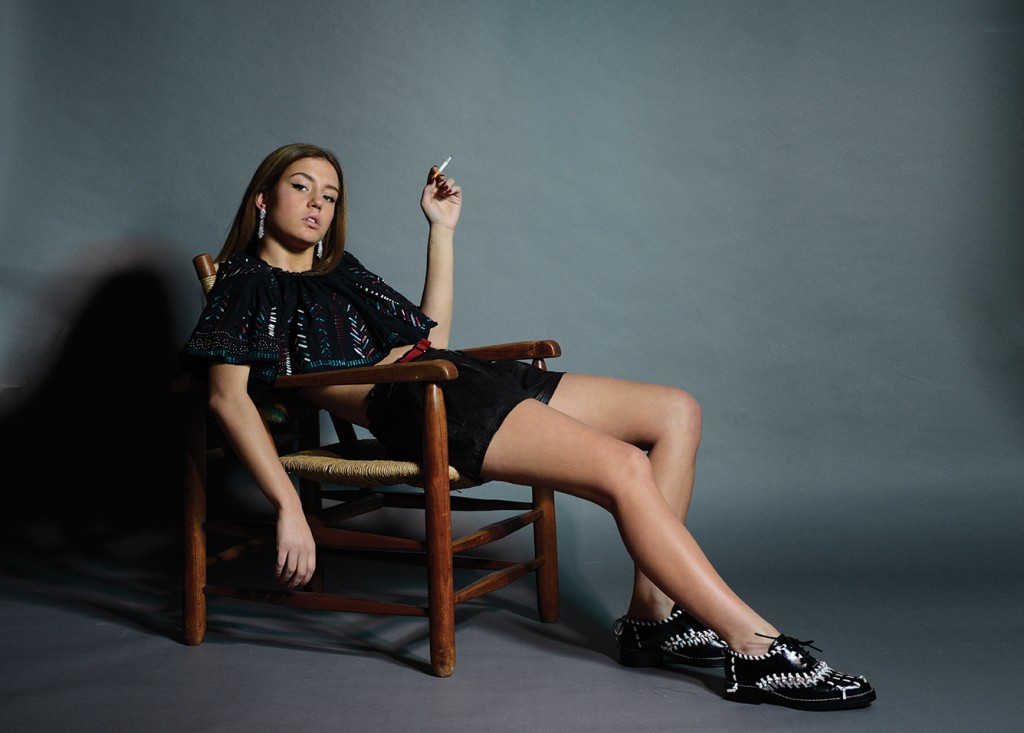
LOUIS VUITTON Gel overdyed blouse, leather shorts, shoes VAN CLEEF & ARPELS A cheval Earrings set in platinum and white gold with round diamonds
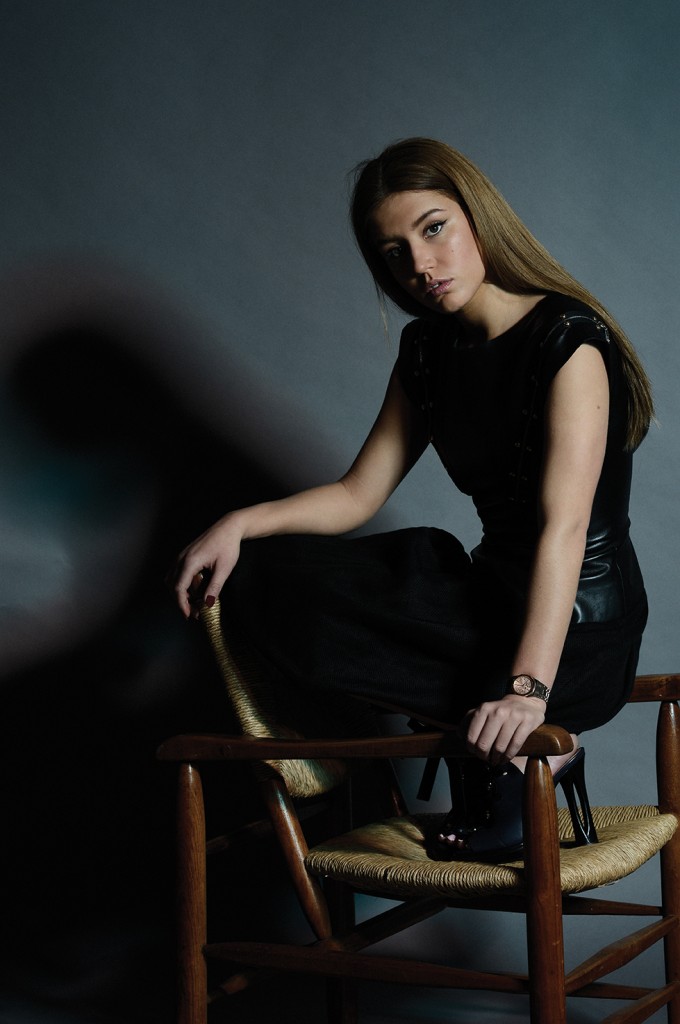
LOUIS VUITTON Leather and linen dress FENDI Shoes AUDEMARS PIGUET Royal Oak quartz watch, 33 mm case size, two-tone material mix: steel and 18-carat pink gold, pink gold-toned « Grande Tapisserie » dial, stainless steel and 18-carat pink gold bracelet
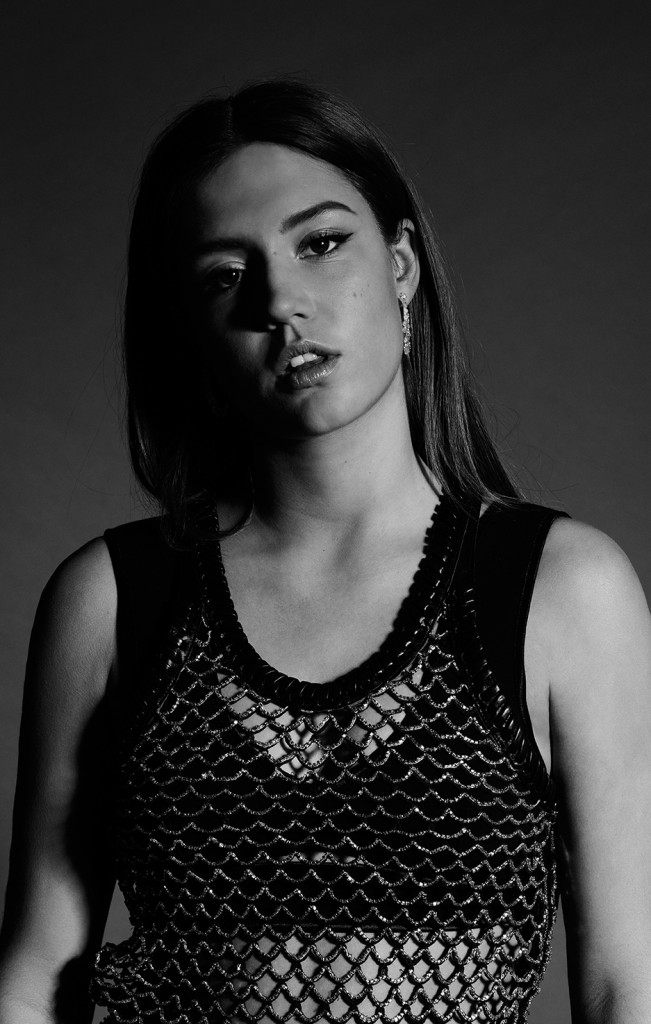
LOUIS VUITTON Embroidered top, bra CHOPARD Pair of earrings from the Haute Joaillerie Collection in white gold set with 150 diamonds (0.78 carats) and 54 briolette-cut diamonds (33.53 carats)







